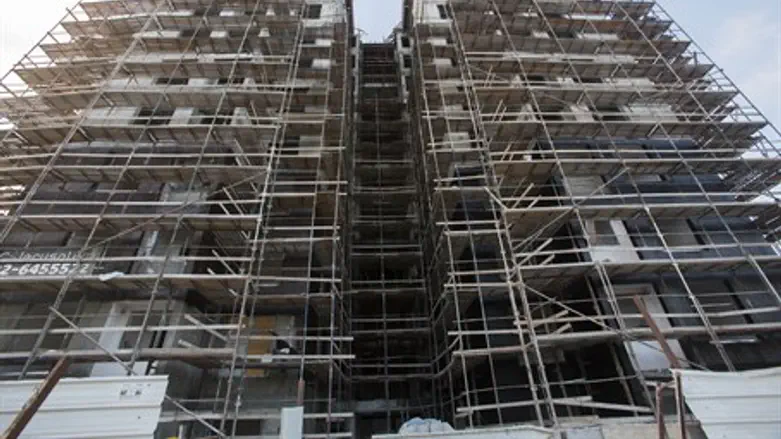
A severe housing shortage has driven prices of apartments out of reach for hundreds of thousands of Israelis, but an urban planner and architect says he has a simple solution that will immediately net tens of thousands of new housing units: Converting buildings in old industrial zones into apartments, as well as building new apartment houses in these areas, where infrastructure is already in place.
“If the cities change the zoning rules in older industrial zones, we will immediately be able to build new apartments, which will be ready in a short time period and will provide an alternative for families and individuals seeking to buy a home,” said Eden Bar, who heads Bar-Levi Architects, a Tel Aviv firm. Bar will present his plan at an urban planning show in Tel Aviv next week.
As the government and Knesset deliberate over establishment of a new government effort to build homes, Bar says that his solution would be much cheaper, faster, and less likely to face regulatory problems than other solutions. “Older industrial zones, which are usually located near residential neighborhoods, already have an infrastructure, as well as transportation and services. There is no need to develop all these in order to establish new neighborhoods.”
Many of the older industrial zones in large and medium-sized cities are underused, especially in the Tel Aviv area. New industrial zones that have cropped up in many cities consist of office parks and skyscrapers that are suitable for Israel's new technology economy, but many of the older industrial zones, which contain lower-profile concrete buildings suitable for factories and workshops, are either shut completely or underused. In addition, new housing in these areas could take advantage of existing infrastructure to save money for developers, and house buyers.
Instead of building new homes on expensive real estate that will require setting up extensive infrastructure, said Bar, cities could offer incentives to convert older industrial buildings into homes. With minimum construction and upgrades - and at relatively low cost - the buildings could be brought up to code for housing, giving them a new lease on life as residential areas, and benefiting both the city or town where the buildings are located, as well as the owners of the properties.
All it would take would be a change in local zoning laws, said Bar, to allow for mixed use (residential and industrial) situations in older industrial zones. In addition to converting existing structures, new construction in these areas would allow builders to charge less for apartments, because they would not have to pay for expensive infrastructure development.
Among the areas where changes in zoning could have a major impact are the old industrial zone of Holon, where Bar believes as many as 15,000 new apartments could be built. Other areas include the older portion of the Ramat Gan diamond district (6,000 apartments), the Korzim industrial zone in Givatayim (2,000 apartments), the old industrial zone on the outskirts of Kfar Sava (6,000 apartments), and Kiryat Aryeh in Petach Tikvah (18,000 apartments).
Altogether, said Bar, his plan could see the development or construction of some 60,000 new apartments in the most in-demand parts of Israel, and that is without expanding the plan to places like Herzliya, Rishon Lezion, or other places around the country, like Haifa, he said.
